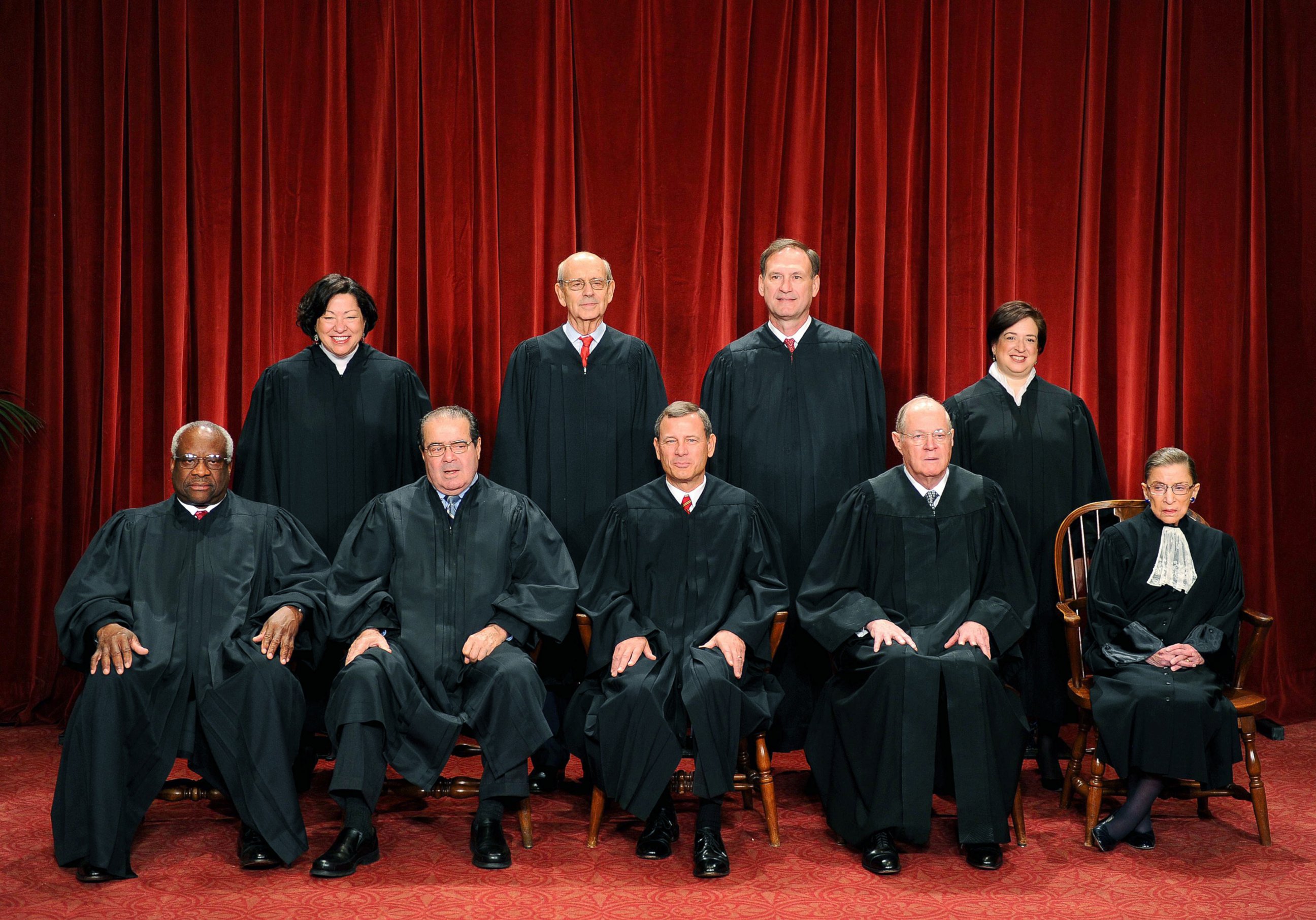Obamacare and How to Read the Supreme Court Tea Leaves
The key votes seem to be in the hands of two justices.
— -- The Supreme Court this morning weighed which states’ residents the Obama administration is legally entitled to provide insurance subsidies to under the Affordable Care Act (ACA), also known as Obamacare.
The case came about when some Virginians who receive subsidies to buy health insurance on healthcare.gov sued the government, saying they shouldn’t be getting the subsidies. They say they’re hurt by the money because without it, they wouldn’t have to buy insurance at all: The ACA requires people to buy insurance, but exempts anyone who would have to spend more than 8 percent of their annual income on health insurance.
When the law talks about how subsidies are calculated, it refers to customers of Exchanges “established by the State,” and doesn’t mention Exchanges established by the federal government. But when Obama’s IRS passed regulations to implement the law, they gave subsidies to customers of both state and federal exchanges. The plaintiffs are trying to prevent the issuance of subsidies to customers of federal exchanges.
ABC News’ legal consultant, Kate Shaw, was in the courtroom as the justices took turns grilling the lawyers for the plaintiffs and the government. Shaw knows the room well. She is an assistant professor of Law at the Benjamin R. Cardozo School of Law in New York, but a few years ago she was a law clerk for former Justice John Paul Stevens. I asked Shaw about her impressions, with her comments edited for space.
Q: What was it like in the room?
The stakes are high, so the room was charged. A number of members of Congress were there. The pace of the questioning was very quick. There were moments of humor: Associate Justice Elena Kagan made reference to the “never-ending saga” that is challenging the Affordable Care Act, Chief Justice John Roberts ribbed the lawyer for the plaintiffs, the Solicitor General Donald Verrilli took a dig at Congress, and laughter punctuated the argument several times.
Q: Who were the lawyers making the case for the plaintiffs and for the government?
Verrilli represents the government before the Supreme Court. Despite the fact that the justices gave him a hard time at oral argument in the first lawsuit challenging the Affordable Care Act, he was successful then in his defense of the statute.
Michael Carvin is a partner at the D.C. law firm Jones Day. He was one of the lawyers challenging the constitutionality of the ACA in 2012 and the justices were clearly very familiar with him, sometimes referring back to arguments he’d made in that case.
Q: What’s this case about?
The ACA did a number of different things, and this case is about only two of them. First, it’s about the creation of federal subsidies for people who can’t afford to buy health insurance. And second, it’s about the “exchanges” where people can shop for health insurance. It directed states to set up these exchanges, but it also provided that if states failed to act, the federal government would set up exchanges instead.
Some states set up their own exchanges; the majority, 34, did not. You’ve described why the people who are suing the administration say subsidies shouldn’t go to anyone on a federal exchange: two places where the statute refers only to an exchange established “by the state.” The Obama administration says this is nonsensical, based on both the language of the statute and its overall purpose. “Established by the state,” they claim, means either the state or the federal government acting in the state’s stead. The plaintiffs’ argument would mean that the law created federal exchanges that were doomed immediately: without federal subsidies, you’d only have the sickest people buying insurance on the Exchange.

Q: What happens next?
Well, if the Court sides with the government, nothing changes. If the Court decides the subsidies aren’t available in the states with federal exchanges, then the question becomes when and how the decision takes effect. The government has said, including in oral arguments, that if the Court sides with the challengers, “The tax credits will be cut off immediately.” I think that has been the assumption until today. But Associate Justice Samuel Alito raised another possibility this morning: that the Court might stay its decision until the end of the tax year, in order to allow people, and maybe Congress and the states, to prepare for the consequences of the decision.
Q: What could we tell from the Justices’ questions?
It seemed pretty clear coming out of the argument that Justices Ruth Bader Ginsburg, Stephen Breyer, Sonia Sotomayor and Kagan had little sympathy for the challengers’ position. Justices Antonin Scalia and Alito, by contrast, seemed persuaded by the challengers’ textual argument; that the text was so clear that there was only one possible result (and that if dire consequences followed, it was Congress’ job to step in). Justice Clarence Thomas asked no questions but he, like Justices Scalia and Alito, seems likely to side with the plaintiffs. So the key votes are Chief Justice Roberts and Justice Anthony Kennedy. Chief Justice Roberts asked very few questions, so it was hard to get much of a sense from him. Justice Kennedy seemed sympathetic to the challengers’ textual argument, but he also asked a number of questions that suggested that the challengers’ reading of the law raised states-rights concern.




